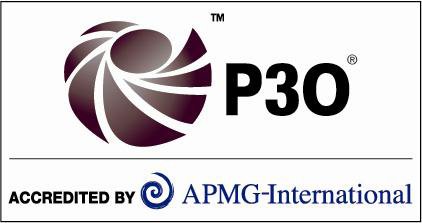 P3O - INTRODUCTION
P3O - INTRODUCTION
Background
 The P3O® guidance - aligned to OGC's PRINCE2®, MSP®, and M_o_R® - brings together in one place a set of principles, processes and techniques to facilitate effective portfolio, programme and project management through enablement, challenge and support structures.
The P3O® guidance - aligned to OGC's PRINCE2®, MSP®, and M_o_R® - brings together in one place a set of principles, processes and techniques to facilitate effective portfolio, programme and project management through enablement, challenge and support structures.
The purpose of the Portfolio, Programme and Project Offices (P3O®) guidance is to provide universally applicable guidance that will enable individuals and organisations to successfully establish, develop and maintain appropriate business support structures that will allow:
- Informed senior management decision making on strategic alignment, prioritisation, risk management, optimisation of resource etc to successfully deliver their business objectives (portfolio management)
- Identification and realisation of business outcomes and benefits via programmes
- Successful delivery of project outputs that enable benefits within time, cost and quality restraints.
P3O? C-P30? R2-D2? Why an efficient P3O really isn't a galaxy far, far away.
On first glance at P3O (Portfolio, Programme and Project Offices) you would be forgiven for thinking that the guidance is aimed at large complex organisations who are high up the PPM maturity ladder. The guidance talks about Portfolio Management, Programme Management, Project Management and an Office for each of these. The Offices can be temporary or permanent, centralised or de-centralised, physical or virtual. Perhaps formed as one corporate office, a hub-spoke formation, or perhaps a 4-4-2 with a sweeper!
Let's keep things simple for a few moments. If a centralised PMO or project office works for you, then it works for us too. SPOCE has been advising organisations for many years about the benefits of a central PMO that provides services to programmes and projects. Services that include maintaining standards; facilitating meetings; programme and project assurance; risk workshops; initiation workshops; health checks; stabilisation workshops. The list goes on.
P3O differs to this standard approach by interfacing with the decision makers at all three levels (Portfolio, Programme and Project).
- At the portfolio level, decision support information is provided by way of management dashboards which can be used for prioritisation of strategic objectives and benefits.
- At programme level, decision support information is provided (and collected) to support and endorse programme and project justification. Separate offices may be setup for a particular division, geographical location or a specific programme.
- At project level, decision support information is provided (and collected) to and from the project boards and teams to enable decision making regarding outputs from the projects.
- The traditional role of the PMO described previously exists within P3O in the guise of a Centre of Excellence (COE).
P3O isn't so much a case of "horses for courses" but rather "a horse for a course". In large organisations an office may exist in the central corporate function, and provide portfolio support, delivery and COE functions. Other large organisations may adopt decentralised offices based on geographical locations. For the smaller organisation, there may be one or two individuals who provide support to the company's senior management, along with support projects to ensure that standards (templates, etc) are maintained and used.
The implementation of a P3O model should be managed as a project. After all, it is a change to the organisation; there will be a defined budget, expected outcomes and a timescale for delivery. It should be handled as a change initiative; implemented in several steps or tranches; use existing standards and approaches where possible, while not conflicting or compromising the new standards; use familiar names of management procedures to provide familiarity, thus reducing the threat of rejection (e.g. the use of commonly known terms such as Risk Identification and Analysis (R2), Programme Definition and Project Definition (D2) "R2-D2"? Now there's a thought...!
If you are considering implementing or re-energising a P3O in your organisation, then these approaches, along with the expert help of SPOCE can really make the difference. SPOCE can help bring together the principles, processes and techniques to facilitate effective portfolio, programme and project management. Use of proven support structures, roles and responsibilities will bridge the gap between the process of developing the organisation's strategy and that of its delivery.
P3O®, M_o_R®, MSP® & PRINCE2® are registered trademarks of the Cabinet Office (# erstwhile OGC - Office of Government Commerce).
More in this section
- Method - P3O Support Offices
- P3O - Introduction
- P3O Qualifications
- P3O Training Courses
- P3O Client Courses
- P3O Offers